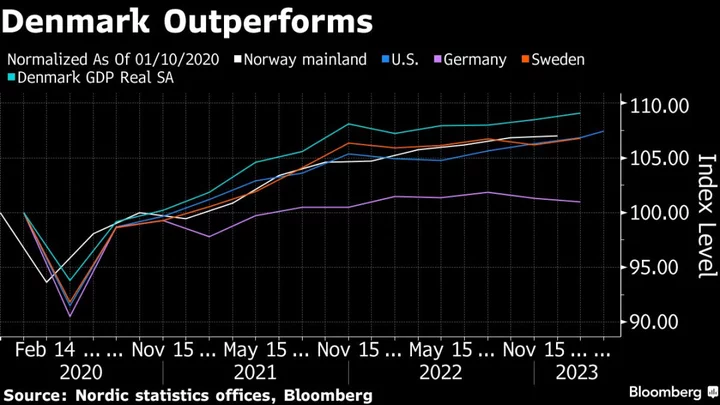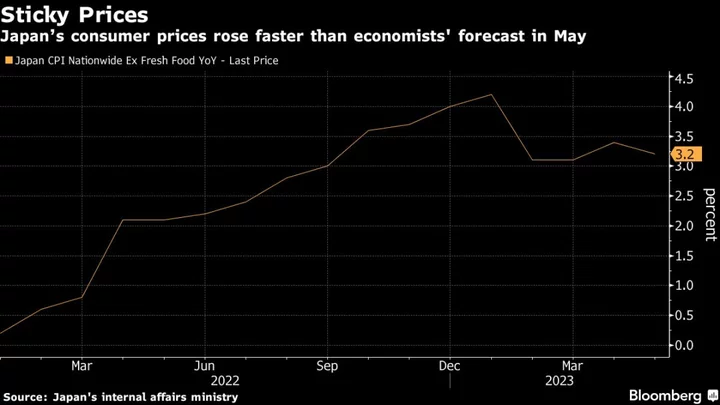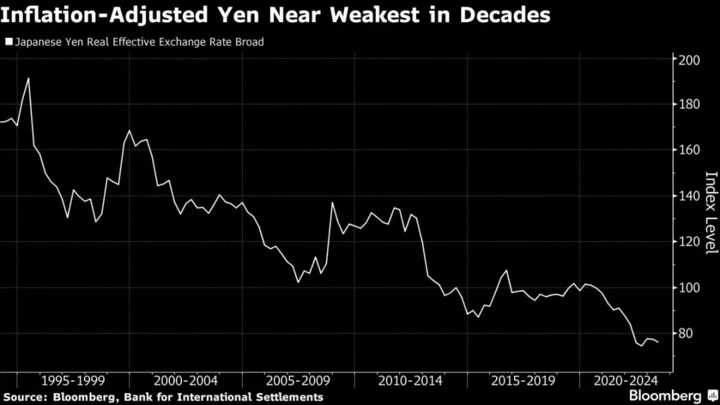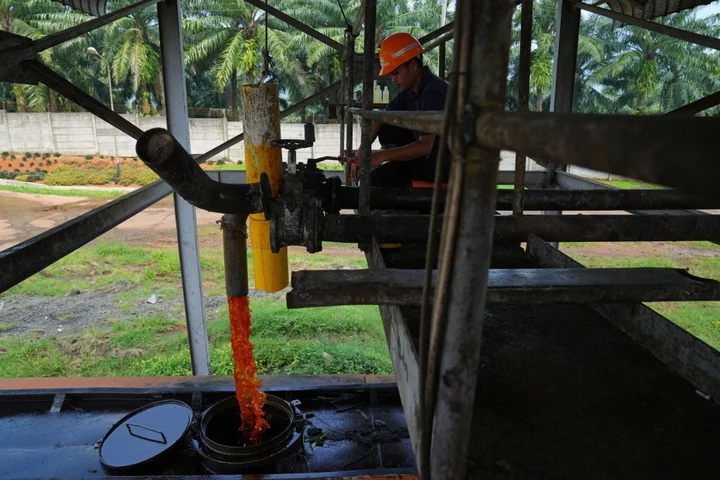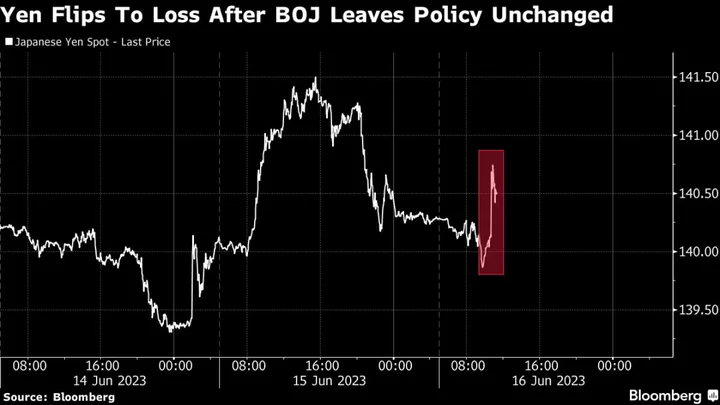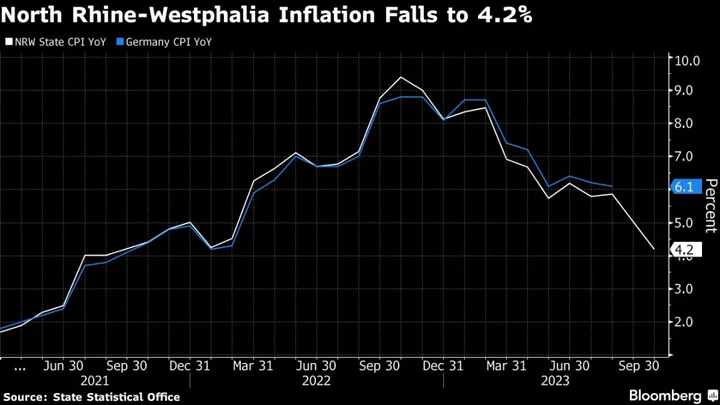Denmark’s economy expanded for the third consecutive quarter as Novo Nordisk A/S and other Danish drugmakers enjoy massive demand.
Gross domestic product grew 0.2% in the second quarter from the previous three months, according to an indicator published on Tuesday by Statistics Denmark which had earlier revised an expansion in the third quarter of last year to no growth. The agency will publish its full report on second-quarter GDP on Aug. 31.
Denmark has outperformed most of its rich peers since the pandemic, but the contribution of drug companies to its GDP has triggered worries it may be concealing weaknesses elsewhere in the Danish economy.
The growth in the second quarter is in particular driven by an “exceptionally strong Danish pharmaceutical sector,” Palle Sorensen, chief economist at Nykredit, said in a note to clients. “Production in the pharmaceutical sector has been so massive that it has pulled the entire economy up. Without it, the picture would probably have been completely different.”
Calculations by Sydbank A/S show that Danish economy would have stagnated since the end of 2021 had it not been for the pharmaceutical industry. Novo’s meteoric rise, helped by its new weight loss drug Wegovy, has pushed its market value above Denmark’s GDP.
Read more: Novo Nordisk’s Growth Camouflages Weak Spots in Danish Economy
Industrial production in Denmark increased by 4.2% on the quarter in the same period, but would have shrunk by 4% if measured without the pharmaceutical industry, Statistics Denmark said earlier this month.
The IMF in June raised from its forecast for Danish GDP, expecting the economy to grow 1.3% in 2023, from a previous estimate of 0.5%.

